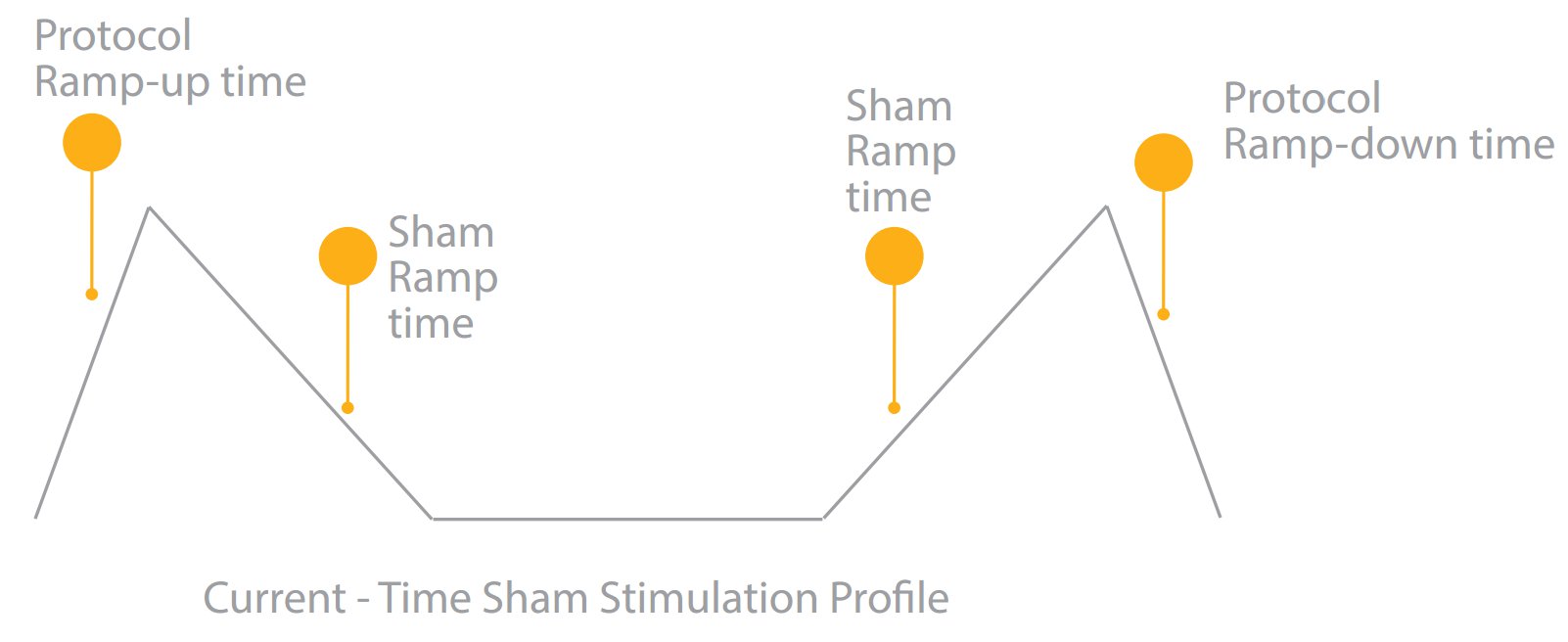Difference between revisions of "About Sham and Double-blind experiments"
(→Single and Double Blinding) |
(→Sham) |
||
| Line 7: | Line 7: | ||
Below there are the pictures to show a normal Stimulation profile and a Sham Stimulation profile. | Below there are the pictures to show a normal Stimulation profile and a Sham Stimulation profile. | ||
| − | Normal Stimulation Profile: | + | '''Normal Stimulation Profile:''' |
[[File:ShamNO.jpg|600px]] | [[File:ShamNO.jpg|600px]] | ||
| − | Sham Stimulation Profile: | + | '''Sham Stimulation Profile:''' |
[[File:Sham.jpg|600px]] | [[File:Sham.jpg|600px]] | ||
Revision as of 12:41, 22 November 2017
With Starstim you can easily implement "sham" stimulation session and also double-blind experiments.
Sham
In tCS, Sham refers to creating an experience for the subject akin to real stimulation, without actually applying significant currents. The subject believes he/she is being stimulated normally, but there should not be any real effects. The goal is to control for placebo effects in treatment. Whether you are doing a doble or single-blind experiment, stimulation sham mode is needed to control for placebo effects. With Starstim, Sham mode is implemented by ramping up and down the current envelope at the beginning/end of stimulation respectively, as it is during these times when the subject can feel the strongest sensations during stimulation. This modulation of the envelope of stimulation applies to tDCS, tACS and tRNS components of the stimulation. The setting of the Sham ramp time depends on the protocol and sensations of the patients, therefore it can be adjusted.
Below there are the pictures to show a normal Stimulation profile and a Sham Stimulation profile.
Normal Stimulation Profile:
Sham Stimulation Profile:
In addition,it is possible to disable the sensations at the end of the session by activating in the software the Single Ramp option:
In a Sham Stimulation profile, the Launch window figure in setting looks like a Normal Stimulation Profile that simply to "fool" the subject in case they are viewing the stimulation protocol but in reality the protocol corresponds to the figure above.
Single and Double Blinding
In single-blind trials, the operator knows which stimulation type is being applied, but the subject doesn't.
In double-blind experiments, the goal is to have both operator and subject blind to which type of stimulation is being applied (e.g., active vs. sham, or anodal vs. cathodal, etc). See our detailed NIC2.0 manual (page 56) for more information on how to configure your experiments and NIC for Sham and double-blind trials.


